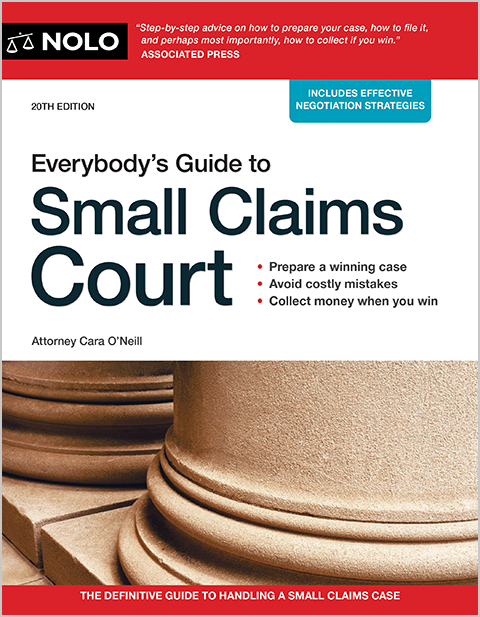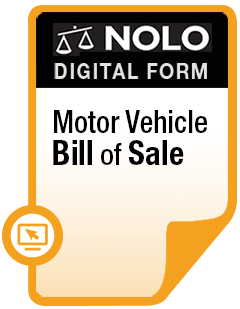Washington's minimum car insurance coverage requirements, penalties for driving without insurance, and more.
Vehicle owners in Washington need to comply with the state's "financial responsibility" laws, usually by purchasing liability car insurance that meets these minimums:
- $25,000 for bodily injury to (or the death of) one person in one accident
- $50,000 for bodily injuries to (or the deaths of), two or more people in a single accident caused by the insured driver, and
- $10,000 for property damage in one accident caused by the insured driver.
Let's explore what's behind these minimum car insurance coverage requirements, and a few more things to know about auto insurance in the state of Washington.
What Is Washington's "Financial Responsibility" Requirement for Drivers?
In Washington, a person who drives a motor vehicle must demonstrate "proof of financial responsibility for the future." (Rev. Code of Wash. § 46.29.260 (2025).) Stated more directly, they must be able to show that they're financially able to pay for (at least some of) the resulting losses if they cause a car accident.
How to Meet Washington's Financial Responsibility Requirements
You can meet Washington's financial responsibility requirements in three ways.
Buy Liability Insurance
Most people comply with the law by purchasing a liability insurance policy with at least the 25/50/10 coverage limits listed above. If you cause an auto accident, liability insurance pays the damages of people you injure (or whose property you harm), up to the limits of your coverage.
Keep in mind that 25/50/10 coverage is only the minimum required by Washington law. If you're legally responsible for an accident that causes damages higher than your policy limits, you'll also be responsible for the amounts exceeding your coverage. You should speak to your insurance agent to decide on the right amount of liability insurance for you. Learn more about what drivers and vehicles are covered by car insurance.
Obtain a Certificate of Deposit
You can deposit cash or securities valued at $60,000 with the Washington Department of Licensing. The Department will issue a certificate of deposit that serves as proof of financial responsibility.
Buy a Liability Bond
Finally, you can buy a liability bond—a guarantee of payment by the bonding company—with the 25/50/10 coverage limits we covered earlier.
Will My Out-of-State Car Insurance Cover an Accident in Washington State?
If you're involved in a Washington car accident while driving a car that's registered in another state, you're required to meet the financial responsibility law of the state where your car is registered. So, your out-of-state liability insurance will almost certainly cover you in Washington as long as it meets your own state's minimum coverage requirements.
Do I Need Personal Injury Protection Car Insurance Coverage In Washington?
Not technically, no. But Washington law says that if you buy a liability car insurance policy, the insurance company must include personal injury protection (or "PIP") coverage as an add-on (and charge you for it) unless you waive PIP in writing. (Rev. Code of Wash. § 48.22.085).
After a car accident, PIP covers a claimant's medical bills, lost income, and other financial losses resulting from crash injuries, regardless of who caused the accident. PIP covers the policyholder, most household family members, anyone riding as a passenger in the policyholder's vehicle, and even any pedestrian who's hit by the policyholder's vehicle.
Learn more about personal injury protection car insurance in Washington (from the State of Washington Office of the Insurance Commissioner).
What Are My Insurance Claim Options After a Car Accident in Washington?
If you're hurt in a Washington car accident, you have a couple of options for getting compensation. You can:
- bring a third-party claim against the responsible driver, or
- file a first-party claim against your own insurance.
Third-Party Claim Against the Responsible Driver
Under Washington's fault-based insurance law, you can bring a third-party claim (meaning a claim against the other driver's auto insurance policy) or file a car accident lawsuit against a driver who's legally at fault for causing the wreck. Unlike a no-fault state, you can go after the at-fault driver without first making a claim under your own auto insurance. If your claim or lawsuit succeeds, you can collect the full range of personal injury damages, including your medical bills, lost wages, pain and suffering, emotional distress, and more.
First-Party Claim Against Your Own Insurance
There are some drawbacks to a fault-based insurance system. First, it'll probably take some time to collect from the at-fault driver's insurance. An insurance claim might take months to settle. A lawsuit can take a year or more to finish. Second, it won't do you any good to pursue an at-fault driver if it turns out that they're uninsured.
Should you find yourself in one of these situations, you might consider filing a first-party insurance claim—a claim against your own insurance policy—if you have the proper insurance coverage.
You Need to Get Paid More Quickly
Suppose your car was badly damaged and isn't drivable. Odds are you can't wait the weeks or months it might take to resolve a third-party insurance claim. If you have collision coverage as part of your auto policy, you can use that insurance to get your car repaired right away. You'll have to pay your collision deductible (likely $500 or $1,000), but you can recover that as part of your claim against the responsible driver.
At-Fault Driver Is Uninsured
If the responsible driver is uninsured, chances are they have no other assets you might look to in order to pay your damages. In that event, your only option is likely to be a claim under your own uninsured motorist coverage—if you have it (it's optional in the state of Washington). Uninsured motorist coverage takes the place of the at-fault driver's missing liability policy, covering all your damages up to your policy limit.
What Are the Penalties for Driving Without Insurance in Washington?
According to the Washington Department of Licensing, if you drive without the required insurance (or otherwise fail to comply with the state's mandatory auto insurance laws), you could be ordered to pay a fine of $550 or more. In addition, if you own or drive an uninsured motor vehicle that's involved in an accident resulting in personal injury or property damage of at least $1,000, your license might be suspended for up to three years.
Finally, you're required to have an insurance identification card. The card can be in paper or electronic form, but failure to display your insurance card is a traffic infraction and creates a presumption that you're uninsured. If you knowingly provide false evidence of financial responsibility to a police officer or a court, you've committed a misdemeanor.
Next Steps After a Washington Car Accident
Washington, like nearly every state, requires that drivers satisfy minimum financial responsibility requirements. Most drivers do this by purchasing auto insurance. You might want to consider having more insurance than what the law requires. Speak to your insurance agent about the right coverages for you.
If you were hit by an uninsured Washington motorist, your best move will be to consult with an experienced personal injury lawyer to find out about your options. Here's how to find an attorney near you.



